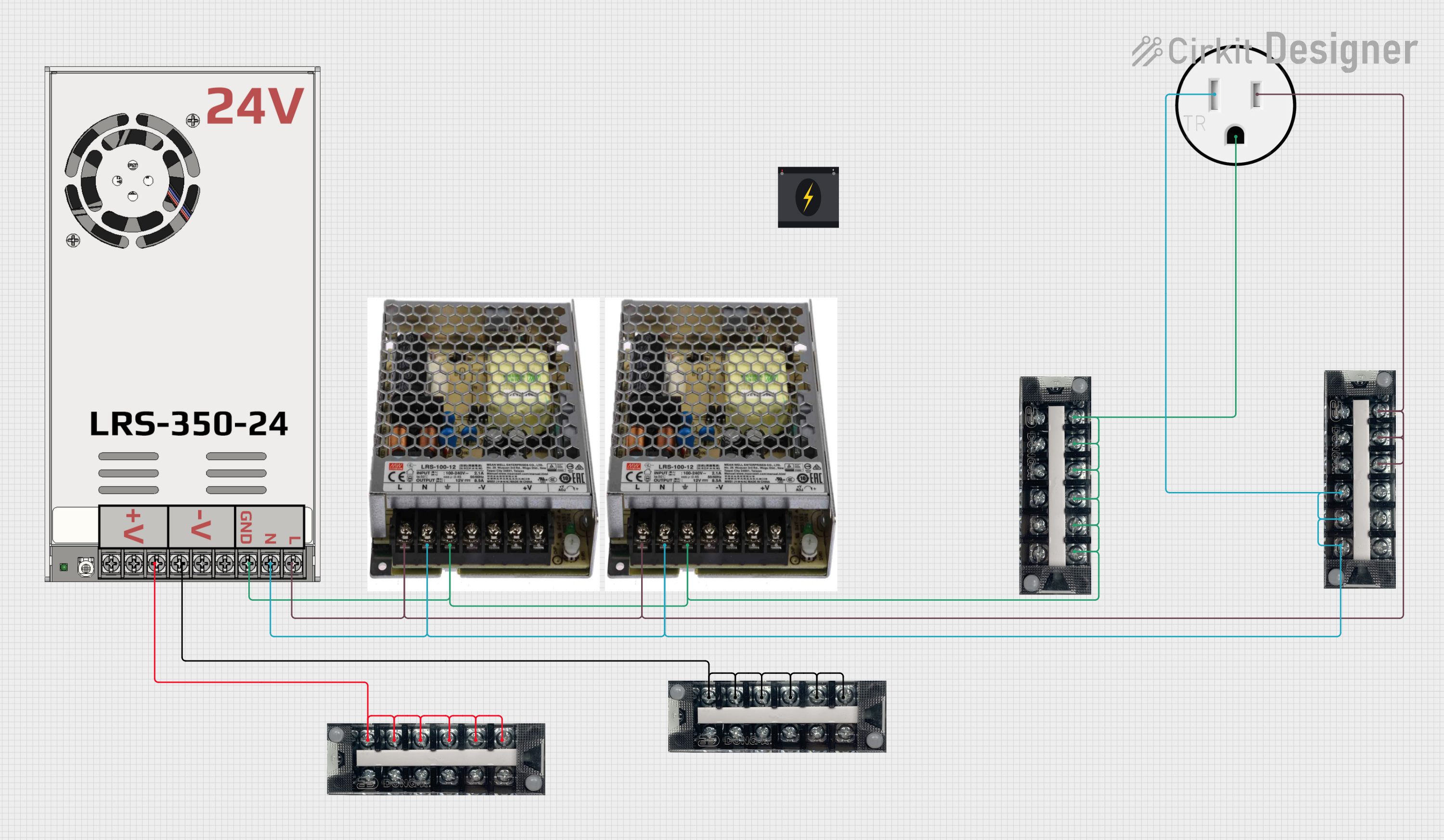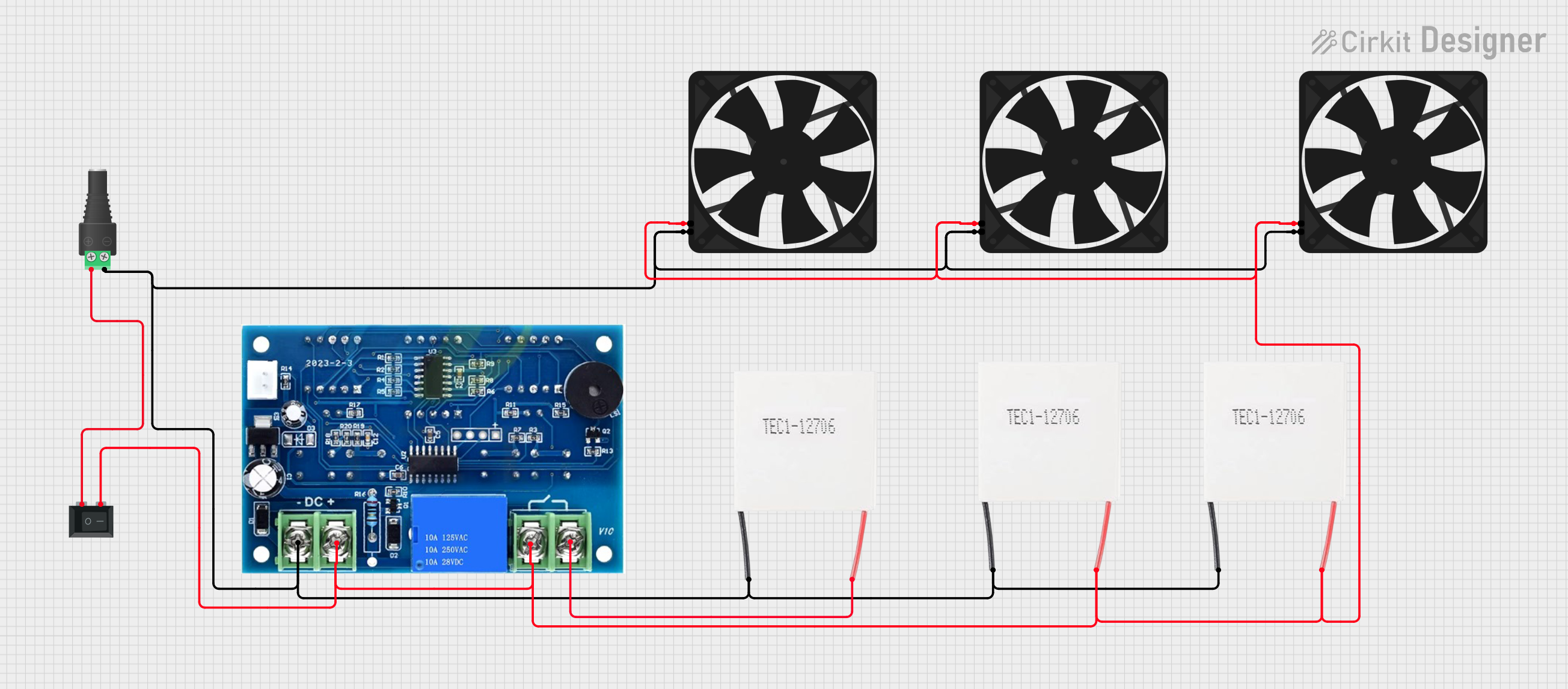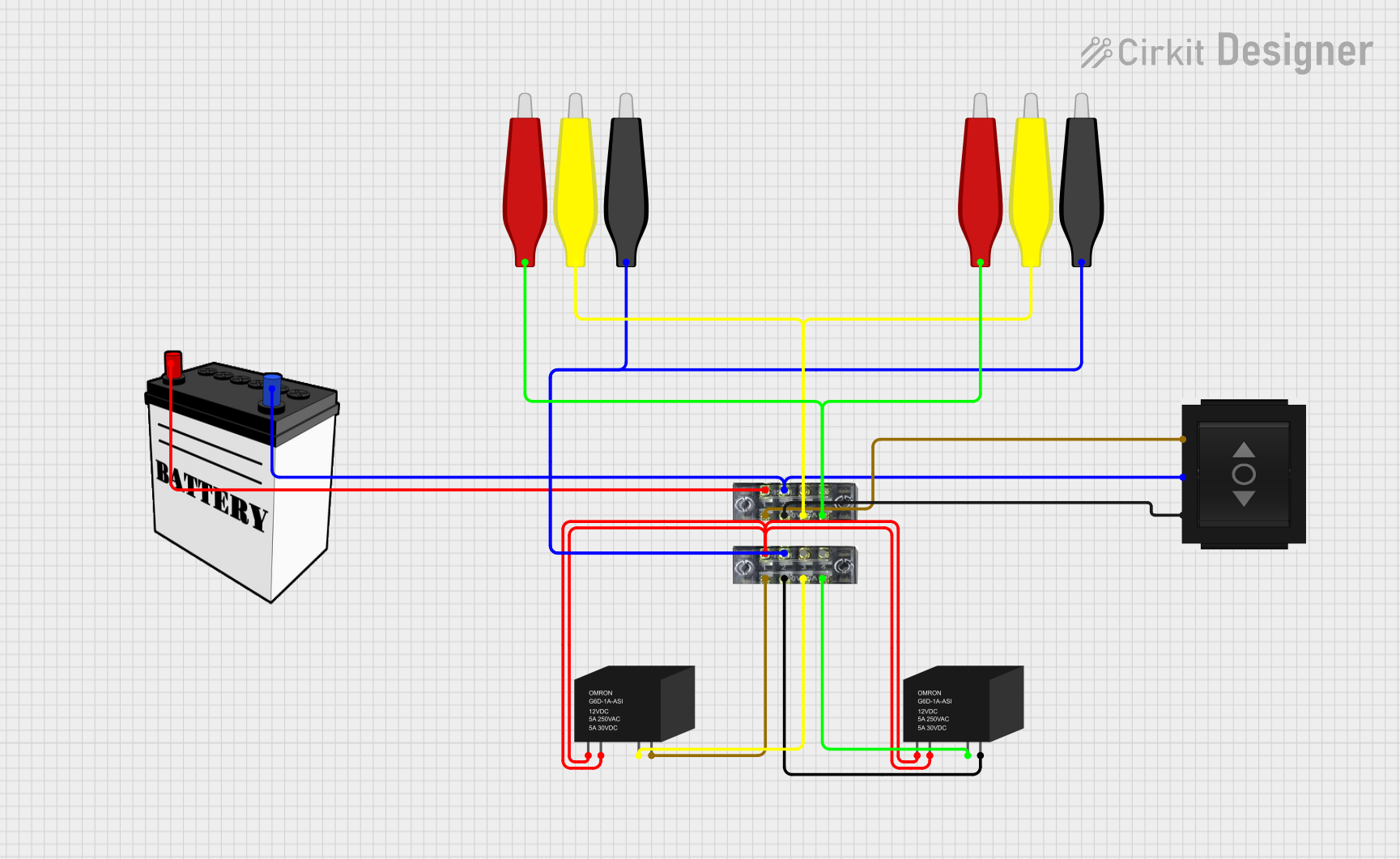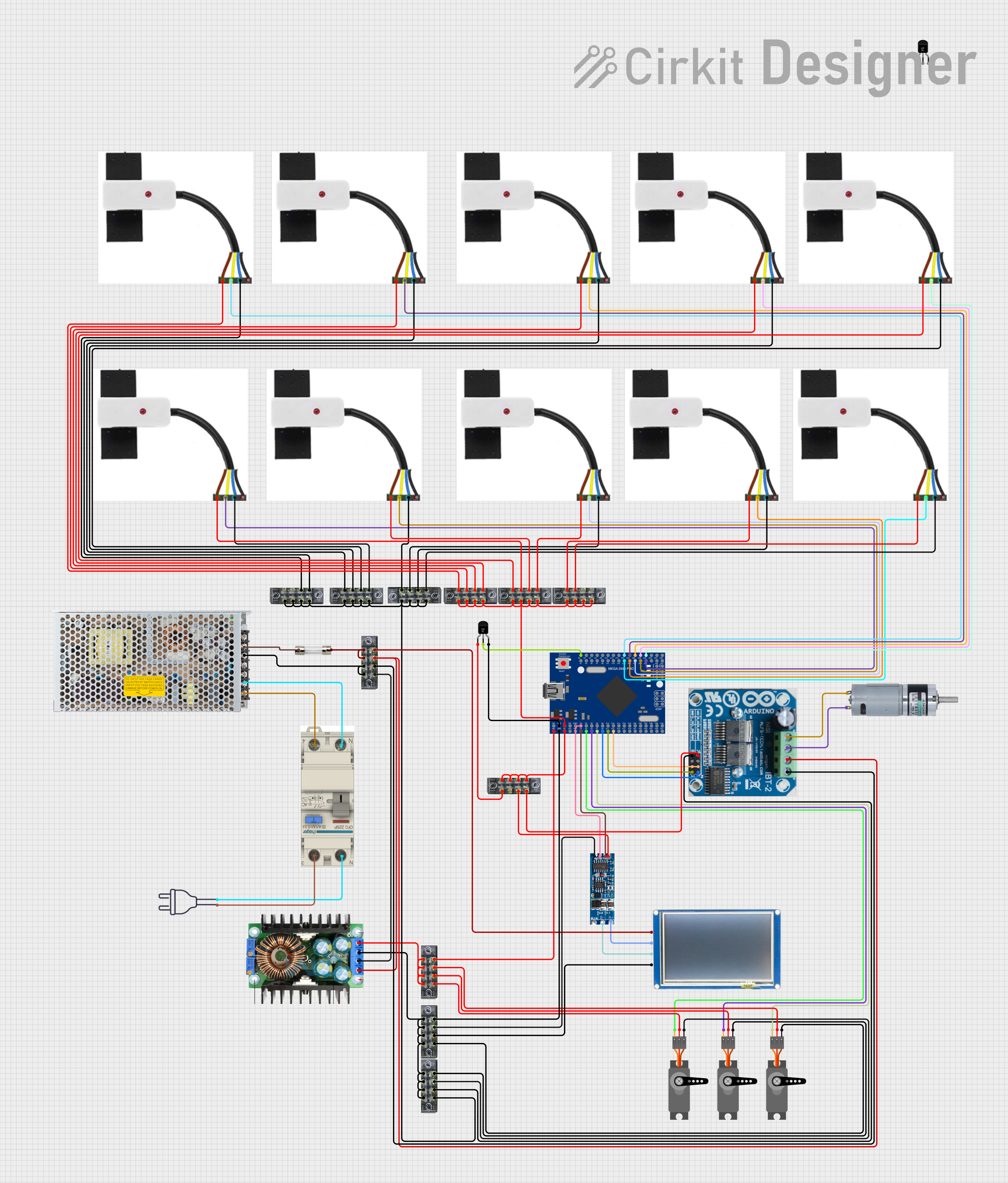
How to Use terminalblock-04-01: Examples, Pinouts, and Specs

 Design with terminalblock-04-01 in Cirkit Designer
Design with terminalblock-04-01 in Cirkit DesignerIntroduction
The TerminalBlock-04-01 is a versatile and reliable terminal block designed for securely connecting multiple wires together. It is commonly used in electrical panels, junction boxes, and other wiring applications where a robust and organized connection is required. This component simplifies wiring tasks, reduces clutter, and ensures a safe and durable electrical connection.
Explore Projects Built with terminalblock-04-01

 Open Project in Cirkit Designer
Open Project in Cirkit Designer
 Open Project in Cirkit Designer
Open Project in Cirkit Designer
 Open Project in Cirkit Designer
Open Project in Cirkit Designer
 Open Project in Cirkit Designer
Open Project in Cirkit DesignerExplore Projects Built with terminalblock-04-01

 Open Project in Cirkit Designer
Open Project in Cirkit Designer
 Open Project in Cirkit Designer
Open Project in Cirkit Designer
 Open Project in Cirkit Designer
Open Project in Cirkit Designer
 Open Project in Cirkit Designer
Open Project in Cirkit DesignerCommon Applications and Use Cases
- Electrical panels for industrial and residential wiring
- Junction boxes for distributing power or signals
- Prototyping and testing circuits
- Connecting multiple wires in automation systems
- Securely terminating wires in control systems
Technical Specifications
The TerminalBlock-04-01 is designed to handle a wide range of electrical requirements. Below are its key technical details:
| Parameter | Value |
|---|---|
| Number of Terminals | 4 |
| Rated Voltage | 300V AC/DC |
| Rated Current | 15A |
| Wire Size Compatibility | 22-12 AWG |
| Material | Flame-retardant thermoplastic (UL94-V0) |
| Mounting Type | Screw mount or DIN rail compatible |
| Operating Temperature | -40°C to +105°C |
| Screw Type | M3 steel screws |
Pin Configuration and Descriptions
The TerminalBlock-04-01 does not have traditional "pins" like an IC but instead features screw terminals for wire connections. Below is a description of its terminal layout:
| Terminal Number | Description |
|---|---|
| 1 | Wire connection point 1 |
| 2 | Wire connection point 2 |
| 3 | Wire connection point 3 |
| 4 | Wire connection point 4 |
Each terminal is isolated from the others, allowing for independent connections.
Usage Instructions
How to Use the TerminalBlock-04-01 in a Circuit
- Prepare the Wires: Strip the insulation from the ends of the wires you want to connect. Ensure the exposed conductor length matches the terminal block's specifications (typically 5-7mm).
- Insert the Wires: Loosen the screws on the terminal block using a screwdriver. Insert the stripped wire ends into the corresponding terminal slots.
- Secure the Wires: Tighten the screws to clamp the wires securely. Avoid overtightening, as this may damage the wire or the terminal block.
- Mount the Terminal Block: If required, mount the terminal block onto a DIN rail or secure it to a panel using screws.
Important Considerations and Best Practices
- Ensure the wire gauge is within the supported range (22-12 AWG) for optimal performance.
- Avoid exceeding the rated voltage (300V) and current (15A) to prevent overheating or damage.
- Use a torque screwdriver to tighten screws to the recommended torque (typically 0.5-0.6 Nm) for a secure connection.
- Keep the terminal block away from moisture and corrosive environments to maintain its longevity.
- For high-vibration environments, periodically check the screw tightness to ensure connections remain secure.
Example: Connecting to an Arduino UNO
While the TerminalBlock-04-01 is not directly connected to an Arduino UNO, it can be used to organize and distribute power or signals to multiple components in an Arduino-based project. Below is an example of how to use it in such a setup:
// Example: Distributing power to multiple components using TerminalBlock-04-01
// This setup assumes the terminal block is used to distribute 5V and GND
// from the Arduino UNO to multiple sensors or modules.
void setup() {
// Initialize components connected to the terminal block
pinMode(2, OUTPUT); // Example: Pin 2 controls a sensor
pinMode(3, OUTPUT); // Example: Pin 3 controls another module
}
void loop() {
// Example: Toggle components connected via the terminal block
digitalWrite(2, HIGH); // Power sensor connected to terminal 1
delay(1000); // Wait for 1 second
digitalWrite(2, LOW); // Turn off sensor
delay(1000); // Wait for 1 second
digitalWrite(3, HIGH); // Power module connected to terminal 2
delay(1000); // Wait for 1 second
digitalWrite(3, LOW); // Turn off module
delay(1000); // Wait for 1 second
}
Troubleshooting and FAQs
Common Issues and Solutions
Loose Connections
- Issue: Wires are not securely clamped, leading to intermittent connections.
- Solution: Ensure screws are tightened to the recommended torque. Check that the wire is fully inserted into the terminal slot.
Overheating
- Issue: Terminal block becomes hot during operation.
- Solution: Verify that the current does not exceed the rated 15A. Use thicker wires if necessary to reduce resistance.
Wire Slippage
- Issue: Wires slip out of the terminal block.
- Solution: Ensure the wire insulation is stripped to the correct length and the conductor is fully inserted before tightening the screw.
Corrosion
- Issue: Terminals show signs of rust or corrosion.
- Solution: Use the terminal block in a dry, non-corrosive environment. Consider using corrosion-resistant terminal blocks for harsh conditions.
FAQs
Q1: Can I use the TerminalBlock-04-01 for DC circuits?
A1: Yes, the TerminalBlock-04-01 is suitable for both AC and DC circuits, as long as the voltage and current ratings are not exceeded.
Q2: How do I mount the terminal block on a DIN rail?
A2: The TerminalBlock-04-01 is compatible with standard DIN rails. Simply align the mounting clips with the rail and press firmly until it snaps into place.
Q3: Can I connect wires of different gauges to the same terminal block?
A3: Yes, as long as the wire gauges are within the supported range (22-12 AWG). However, ensure each wire is securely clamped.
Q4: Is the TerminalBlock-04-01 reusable?
A4: Yes, the terminal block can be reused multiple times. However, avoid overtightening screws to prevent wear and tear.
This concludes the documentation for the TerminalBlock-04-01. For further assistance, consult the manufacturer’s datasheet or contact technical support.